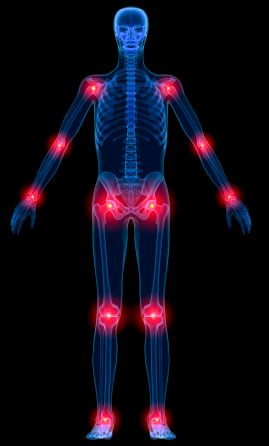This morning Newcastle University published the following press release . We are reposting it in full because we think that it represents a brilliant opportunity for the autism community.
“Immersive reality can help children with autism spectrum disorder overcome their fears and phobias, new research has shown.
In a study published today in PLOS ONE, experts at Newcastle University describe how, following treatment in an immersive virtual reality room, eight out of nine children were able to tackle the situation they feared. Four children were found to have completely overcome their phobias. The effect of the treatment was still in place one year later. A video show the treatment in action.
Around 150,000 children in the UK are thought to have autism spectrum disorder and it affects four times more boys than girls. A study released earlier this month found that the condition costs the UK £32bn every year. Many people with autism spectrum disorder have a fear or phobia which can be so distressing that they and their families completely avoid the situation.
Each of the nine boys, aged between seven and 13 and with a diagnosis of autism spectrum disorder, was immersed into a virtual environment which gradually introduced them to a scene of the real-life situation they feared. This included getting on a busy bus, crossing a bridge, going shopping or talking to an avatar shop assistant.
Supported by a psychologist, they were given breathing and relaxation exercises in the controllable and safe virtual environment to help them to learn to cope with that situation.
Fears and phobias
Dr Jeremy Parr, Clinical Senior Lecturer specialising in Paediatric Neurodisability at Newcastle University’s Institute of Neuroscience said: “Phobias have a huge impact on a child with autism and on the whole family. Parents often find themselves taking action to avoid the situation the child fears, which can impact on school and leisure activities.
“Currently the main treatment is cognitive behaviour therapy but that often doesn’t work for a child with autism as it relies on imagination. People with autism can find imagination difficult so by providing the scene in front of the child’s eyes we help them learn how to manage their fears.”
The Newcastle University team worked with company Third Eye Technologies in their unique Immersive Blue Room to create personalised scenarios. Accompanied by a psychologist, the child was completely surrounded with audio visual images representing the ‘real world’ in the 360 degree seamless screened room with no point of external reference. This meant they did not have to wear a headset or goggles. They moved around the scene using ipad controls, interacting and navigating through the scenario as they wished allowing them to fully control the environment.
Children were observed by their parents via a video-link which enabled them to watch the techniques used to help their child. This had obvious benefits as Newcastle University researcher Dr Morag Maskey explains: “One boy was so fearful shopping that he would walk behind his parents with his hood up, refusing to even speak to people he knew.
“We created a petrol station kiosk scene in the Blue Room where he picked up a newspaper. With the help of the psychologist who was in the room with him, he learnt to control his anxiety with breathing and stretching exercises. He then built up confidence over four sessions until he held a conversation with the shop assistant avatar.
“At home his parents encouraged him to do more of the shopping on his own and use the techniques they had seen him practice.
“The therapy was so successful that he is now able to go shopping with his friends.”
Another nine-year-old boy in the study had a fear of crowded buses and underground trains which meant as his family had no car, they could face a 40 minute wait for an emptier bus or experience his difficult behaviour on a crowded bus. Building up his confidence with a scene of a bus that became more crowded over the four sessions has given a new lease of life to his family who are now able to board any bus – regardless of how many people are on it.
Treating phobias
Dr Parr from Newcastle University’s Institute of Neuroscience, added: “Parents told us that they could see the difference in their children over the course of the four session programme – their children are now much better at coping with the situations that they once found distressing. Twelve months later, the children are still able to cope.
“This treatment has led to big changes in the lives of some families. To see a child who couldn’t get on a crowded bus do so after just four weeks of treatment is amazing.”
The flexibility of the Blue Room means that scenes can be gradually built up in complexity and noise level, allowing a graded exposure and element of control that cannot be achieved in real life. However, the technology has a wide range of applications as Paul Smith, CEO of Third Eye Technologies explains: “Immersive reality environments offer a powerful tool for training as participants can navigate through scenarios at their own discretion and therefore be taken closer to reality than ever before becoming active members of a 360 degree virtual world. The work performed shows that although participants appreciate that they are in a replicated environment, within a very short period of time they start reacting and behaving as they do in the real world. ‘
“The young people in this study were able to navigate through an environment such as a street or a school and interact with objects and people, rehearsing their newly-learned skills. Because there is no point of external reference and because it’s in true perspective people genuinely think they’re in the environment – which is why it’s so effective.
“When we were approached to take part in this study, it was an area of work we had never considered but it shows how innovative use of the latest technology can help in surprising areas such as health.”
Carol Povey, Director of The National Autistic Society’s Centre for Autism, said: “Some people with autism can struggle in everyday social situations that many of us take for granted, such as boarding a bus or going to the local shop to buy a pint of milk. A chance to explore stressful scenarios in a safe, virtual environment could help those whose lives are dominated by anxiety to better manage their fears, improving their quality of life.”
Baroness Hilary Armstrong social exclusion who has been following the work said: “The Blue Room has given children with autism the opportunity to deal with their fears and anxieties in a remarkable way. This has changed their lives, and the lives of their families. This is exciting progress that has the potential to offer real opportunities to many more children and young people with autism.”
The Newcastle University team are continuing their work in this area, and will shortly begin a new project that will investigate the treatment being used in the NHS in North East England.



